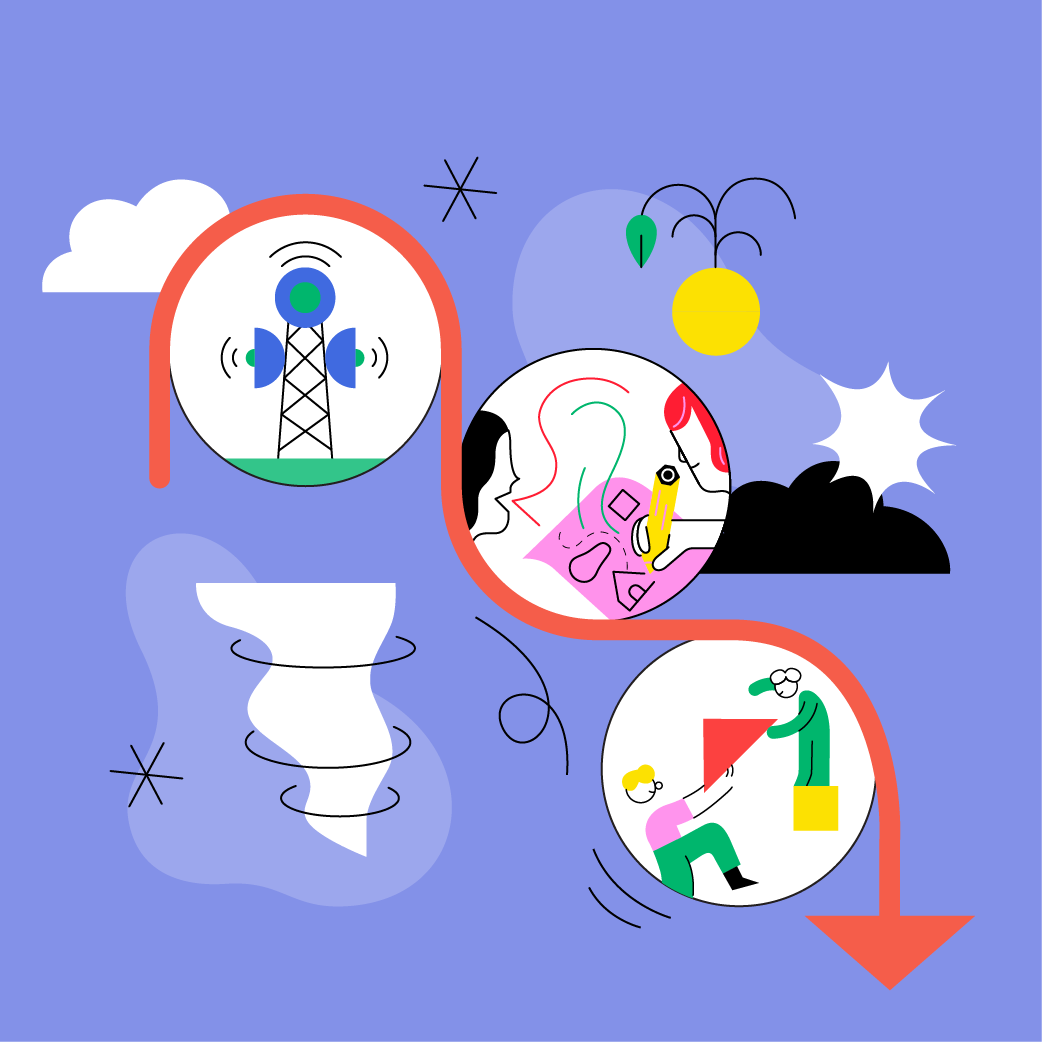
Behavioural Insights
Applying and testing solutions inspired by behavioural science
Introduction
Applying evidence and methods from the behavioural sciences is critical to understanding and addressing the cognitive, social and environmental drivers of behaviours. Using approaches from the behavioural sciences will help you develop focused and cost-effective behaviour change interventions. This tool explores how Behavioural Insights (BI), which describes the methods and insights derived from the behavioural sciences, can be applied to the design and testing of behaviourally informed solutions.
Objectives
- Design evidence-based and contextually-relevant interventions informed by evidence from the social and behavioural sciences, which contribute to measurable behaviour change. Such interventions may boost intention by leveraging innate biases in judgement and decision-making, or help overcome intention-action gaps by reducing logistical and psychological friction in policies, processes and services.
- Test solutions or interventions (also known as prototypes) to get a sense of a solution’s potential impact and understand how it can be improved.
Biases and tactics commonly leveraged in BI approaches
The biases that affect the way people think can help explain why people make unexpected or undesirable choices. Understanding how and why people make judgements and choices allows us to design behavioural change interventions with greater impact.
A few common cognitive biases (of many!)
Loss aversion: Losses feel more painful than equivalent gains. People are more motivated by the prospect of losing something than the opportunity to gain something.
Present bias: When making a decision, people care more about immediate costs/benefits than future costs/benefits. For example, even if getting up early to exercise has long-term benefits, people tend to focus on the short-term cost of losing an hour of sleep.
Confirmation bias: People are more likely to pay attention to information that confirms their pre-existing beliefs. For example, a person who is against getting vaccinated is more likely to pay attention to information about rare, negative side effects of vaccines than to evidence on the benefits of vaccination.
Information avoidance (‘ostriching’): People tend to avoid seeking out important information when they expect it to be unpleasant, even when the process of acquiring it is free and simple. For example, people avoid free HIV testing out of fear of receiving positive results. People will avoid checking their bank account balance or stepping on the scale when they feel they won’t like the number they see.
Hot-cold empathy gap: When in a ‘cold’ state (e.g., when we are calm, happy, or satisfied), people often fail to predict how they will act in a visceral or hot’ state (e.g., when we are hungry, tired, stressed, or sexually aroused). For example, people keep unhealthy snacks at home because they assume they will have the willpower to eat them sparingly. However, people often fail to consider that when they get tired, hungry or stressed, they are likely to reach for the convenient, unhealthy snack.
Restraint bias: People have overconfidence in their self-control (particularly in a ‘hot’ state). For example, adolescents may avoid using modern contraceptives because they are overconfident in their ability to stay abstinent.
A few common behavioural tactics (of many!)
Once we understand certain biases, we can design interventions that take them into account. Here are some tactics that can be included in behaviourally-informed interventions:
Commitment devices: Asking people to publicly pre-commit to a given action when they are most motivated to do so in order to encourage them to complete a specific behaviour. Commitment devices can help overcome procrastination and hot-cold empathy gaps. For example, by allowing farmers to restrict access to their accounts, commitment-based savings accounts in Malawi increased farm profits by $133 in a single year.
Social comparison and benchmarking: Showing people how their behaviour compares to that of their peers in order to motivate behaviour change. For example, sending the residents of Belen, Costa Rica a social comparison notice that compared their water usage to that of their neighbour’s and helping them create a plan for how to use less water, decreased monthly water consumption by 4.5%.
Reminders: Providing timely reminders to engage in a behaviour when people are able to complete it. For example, weekly SMS reminders sent to HIV patients in rural Kenya increased adherence to antiretroviral therapy (ART) by 13 percentage points.
Implementation intentions: Encouraging people to develop a specific plan for how they will complete an action that includes plans to overcome possible barriers that may arise (‘if x, then y’). For example, redesigning savings programmes in the Philippines to include a printed savings plan increased savings balances by 37%.
Defaults: Making the intended choice the standard for people to opt out of rather than opting into. For example, a mobile phone savings programme in Afghanistan that allowed people to automatically deposit a portion of their paycheck into a savings account increased savings rates by 40 percentage points.
Feedback: Providing people with immediate feedback upon completion of a behaviour in order to make benefits/costs more salient. For example, playing a short game on HIV risks and receiving immediate feedback on correct versus incorrect answers reduced incorrect estimations of HIV risk among young people in South Africa by 28 percentage points.
- Framing: Presenting information in a manner that harnesses biases to shape decision-making (e.g., leveraging loss aversion to prompt people to consider the costs of inaction). For example, sending behaviourally informed text messages to parents in Uruguay about the potential losses children experience when they miss school, increased attendance by an average of 1.5 days per child during a 13-week intervention.
How do you apply and test solutions inspired by behavioural science?
Define behavioural outcomes
- Define the problem you are trying to solve.: What and whose behaviour do you want to change? How can it be measured?
Collect behavioural insights
- Map every step a person takes to make a decision and follow through on it.
- Hypothesize where and how the context might impede or enable decision-making and behaviours, using an understanding of cognitive biases to This step will help you develop a rigorous qualitative research plan.
- Conduct in-depth qualitative research and analyse observations to determine how the context influences behaviour. Keep in mind that people are not always consciously aware of what drives or impedes their behaviour. When possible, supplement observations and community insights with other methodologies to uncover factors that may be unconsciously influencing behaviour.
- Translate the data into usable insights. Look for patterns and trends in the behaviour and assess whether data supports, contradicts or supplements your hypotheses.
- Translate the insights into user journeys or behavioural mapsOutline the journey one takes to complete a behaviour, and how the context influences their decision-making at each step. This will help you identify potential touchpoints to design solutions for. Behavioural frameworks, such as the behavioural drivers model, can help you organize your insights.
Design behaviourally-informed solutions
- Co-design solutions with end users to address behavioural barriers. Your solutions should make healthy behaviours easier and createing moments of contemplation before automatic, unhealthy actions. Specific behavioural techniques can be mapped to specific barriers. . The Behavioural Change Wheel. (Michie et al., 2011) identifies a number of behavioural change techniques that correspond to barriers identified through behavioural insights.
- Iterate on designs based on feedback from users (e.g., clients, healthcare workers, or family members). Each iteration should feature a small, precise change. Test each solution with your intended users to see what resonates with them most.
Test, implement, learn and scale
- Test the impact of your interventions in stages. Start with a feasibility test or pilot to understand the feasibility, acceptability and potential impact of designs.
- Iterate on designs based on what you learn then conduct an experimental or quasi-experimental impact evaluation, using the most rigorous evaluation method available.When possible, conduct a randomized controlled trial (RCT). RCTs are the best way to find out what works
- Continue to monitor the implementation process after the intervention has been scaled up to systematically identify challenges.
Things to keep in mind
- Change the context, not the person: Removing innate cognitive biases is impossible. Behaviourally-informed solutions should not attempt to overcome these biases but rather work with them to make it easy for people to follow through on their intentions.
- Check your assumptions: Observe how people actually behave, not how you think they should behave.. Designs should be rooted in evidence and insights.
- Identify unconscious drivers: We are not always fully aware of what influences our choices and often fail to predict our future behaviour. Do not rely solely on self-reports of behavioural drivers. Supplement observations and self-reports with insights from the literature and other methods that can uncover unconscious drivers.
- Iterate, iterate, iterate: Do not expect to get things right the first time. Revise hypotheses based on evidence and revise interventions based on feedback. Be sure to test different versions of designs.
- Design for real people, not perfect people: Do not assume people will use something just because it is helpful. You should aim to make it as easy as possible for people to take their intended action.
- Small changes can have a big impact: Test whether simple, low-cost solutions can have an outsized impact.
- Get the evidence: Always test the feasibility and potential impact of solutions before scaling it up.
Measurement
Research type | Purpose | Methods |
Formative research | Understand how context and the brain influence decision-making and behaviours, to identify barriers to overcome and opportunities to leverage. | Qualitative: Literature reviews, qualitative in-depth interviews, focus group discussions, vignettes, journaling and daily activity charts, card-sort activities, structured and unstructured observations, journey mapping, experience mapping, and ethnographic studies Quantitative: surveys coupled with multivariable analyses specifically designed to quantify the degree to which various factors influence choice or preference |
User testing / prototyping | Observe how designs work within a given context and iterate on ideas based on user feedback. | Interviews and live user testing |
Pilot / feasibility testing | Assess the feasibility, acceptability and potential impact of designs. | Structured questionnaires, structured observations |
Impact evaluation | Rigorously measure changes in behaviour associated with exposure to the intervention for each subgroup | RCTs, quasi-experimental methods.
|
Continued learning and implementation research | Continuously monitor the implementation process to identify gaps and understand challenges with scaling and adapting to real-life settings. | Structured observations, surveys, qualitative interviews, quantitative and qualitative feedback systems. |
When to use Behavioural Insights
In some cases, you may find that other tools in the Social and Behaviour Change toolbox may be more helpful than taking a BI approach. Here are questions to help you determine whether applying BI is a good fit for your situation:

Key resources
Frameworks and approaches
- UNICEF’s Applied Behavioural Science White Paper
- Michie et. al’s COM-B: Capability, Opportunity, Motivation
- Behavioural Insight Team’s MINDSPACE
- Behavioural Insight Team’s EAST Framework
- Friction and Fuel Framework
How-to guides
- The OECD’s BASIC Toolkit
- BEAR’s A Practitioner’s Guide to Nudging
- The Little Jab Book for COVID-19 Vaccination
- The Surgo Foundation’s The CUBES Toolkit
- The BehaviourWorks Method
- Test, Learn, Adapt: Developing Public Policy with Randomised Controlled Trials
Ethical considerations
- Ethical Considerations When Applying Behavioural Science in Projects Focused on Children
- FORGOOD Framework for Ethical Considerations When Nudging Behaviour
Further learning

Do - Behavioural Insights
Download this article as a PDF
You can download the entire page as a PDF here





